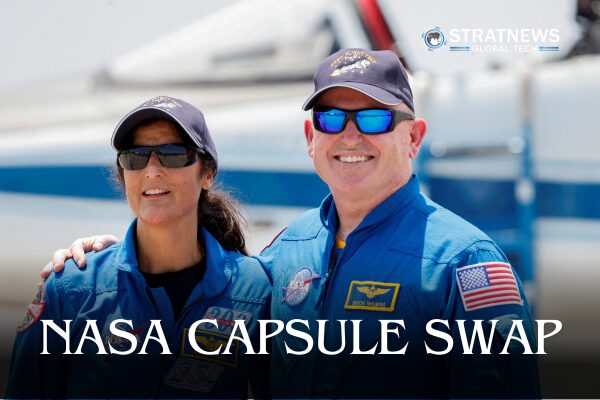NASA Swaps SpaceX Capsule to Speed Up Crew Return from Space Station
NASA swaps SpaceX capsule for its upcoming Crew-10 mission to the International Space Station (ISS). This move will allow an earlier-than-expected return for two astronauts, Butch Wilmore and Suni Williams, who have been on the station much longer than planned due to delays with Boeing’s Starliner capsule.
Capsule Swap Brings New Launch Date
The US space agency has decided to use a previously flown SpaceX Crew Dragon capsule called Endeavor for the Crew-10 mission. Initially scheduled for March 25, the launch has now been moved up to March 12. The Endeavor capsule has been on three previous missions, but it still needs to pass a flight readiness assessment before the upcoming launch.
The switch was necessary because production of a new Crew Dragon capsule had been delayed. This adjustment means that Wilmore and Williams, who arrived at the ISS last summer aboard Boeing’s Starliner capsule, will be able to return home sooner. Their return depends on the arrival of the Crew-10 team to maintain normal staffing at the ISS.
Political Spotlight and NASA’s Response
The decision to accelerate the astronauts’ return came after former President Donald Trump publicly urged SpaceX CEO Elon Musk to bring them back as soon as possible. While NASA had already planned the return, Trump’s call drew unusual political attention to the mission.
In response, NASA emphasised that it would prioritise safety while bringing the astronauts home “as soon as practical.” Steve Stich, head of NASA’s Commercial Crew Program, acknowledged the challenges of human spaceflight and praised SpaceX for its adaptability.
Trump’s intervention blamed his successor, Joe Biden, for the astronauts’ extended stay, although Biden had no direct involvement. Musk echoed the criticism despite the situation being widely attributed to technical issues with Boeing’s Starliner.
Impact on Other Space Missions
The capsule swap will affect several other missions, including SpaceX’s Fram2 private astronaut mission, which was set to use Endeavor for a polar orbit. Fram2’s commander, crypto entrepreneur Chun Wang, expressed disappointment on social media, writing, “We’ve lost the South Pole in the daylight,” with a sad face emoji.
The decision may also impact Axiom Space’s planned Crew Dragon mission, which aims to transport government astronauts from India, Poland, and Hungary later this year. Axiom has yet to comment on how the change will affect its schedule.
SpaceX’s Crew Dragon was developed with around $3 billion in funding from NASA’s Commercial Crew Program to stimulate the commercial space market and reduce costs. Boeing’s Starliner is part of the same program but has faced significant technical setbacks, preventing it from completing its intended mission.
with inputs from Reuters


